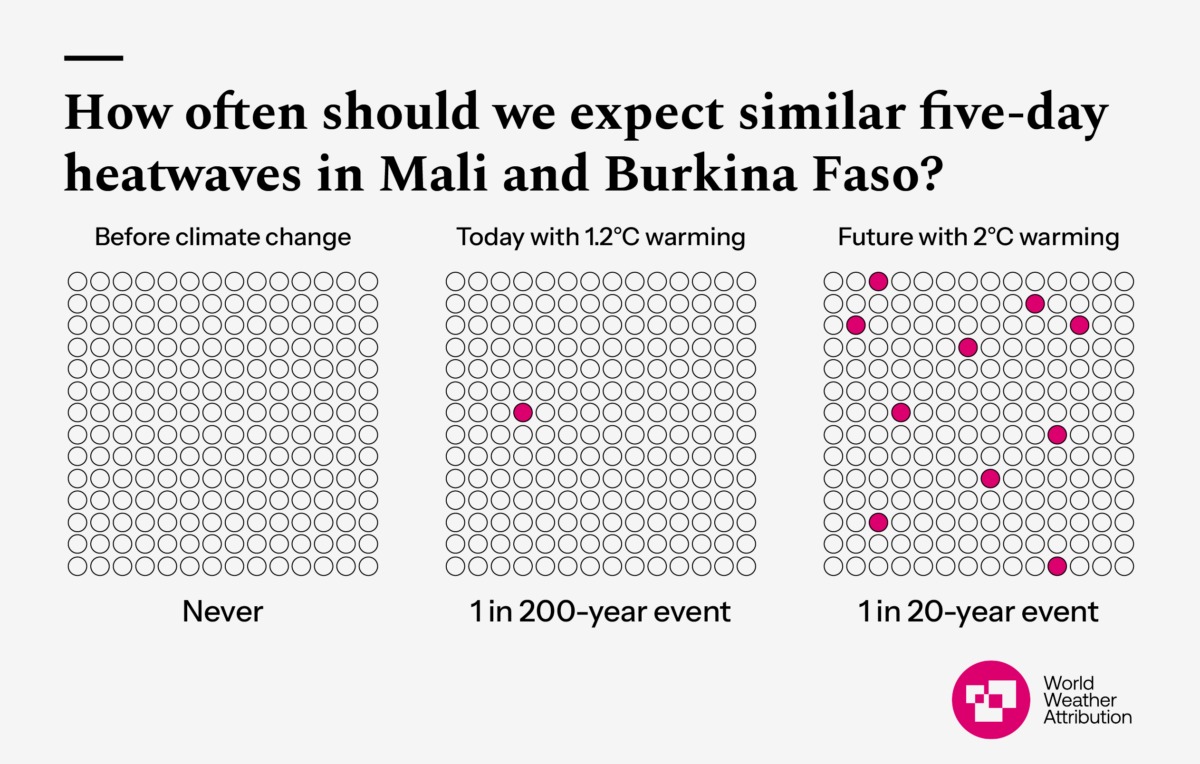The Impossible Heat Wave Era is Upon Us
Photo by Mamunur Rashid/NurPhoto/Shutterstock
At the end of March and into the early days of April, the Sahel region of Africa experienced an unprecedented heat wave. Extreme temperatures descended upon Guinea, Burkina Faso, Senegal, Niger, Nigeria, and Chad. One city in Mali recorded a temperature of 48.5 degrees Celsius (over 119 degrees Fahrenheit). The heat wave was impossible.
Or, it would have been impossible without the 1.2 degrees Celsius that humans have already baked into the global climate system. That’s the conclusion from scientists with World Weather Attribution, a group that makes rapid assessments of climate change’s influence on extreme weather events. They use various modeling and observational techniques to establish a “fingerprint” of warming on a given event; in this case, it simply wouldn’t have happened in a normal world.

Death tolls from heat waves often don’t become clear until months later, but there are early indications of its severity. One hospital in Mali’s capital Bamako recorded 102 deaths just between April 1st and April 4th. That same hospital recorded 130 deaths over all of April 2023. Many areas affected by the heat had power cuts at the same time, exacerbating the problem.
The otherwise-impossibility of these events is going to more or less become the norm. Most of World Weather Attribution’s results suggest increased odds, incrementally juiced temperatures, higher likelihood of that much rain, and so on. In virtually every event now (they do occasionally find that climate change had little influence), warming’s effect is clear and dramatic — but there is something viscerally different about events that would not have just been rare but literally could not have happened without the blanket of greenhouse gases humans have tucked around the planet.
The Sahel heat wave was not the first of these, though the scientists do seem surer of this one. Last July’s extreme heat in the U.S. and southern Europe would have been “virtually impossible” in an unwarmed world. An April 2023 heat wave in Spain and Portugal as well as Morocco and Algeria was “almost impossible” without climate change. Even the 2020 extended warmth in Siberia “would have effectively been impossible.” It is a safe bet that we will see more and more of them moving forward, likely without the various qualifiers before “impossible.” As that chart above shows, if we get up to 2 degrees C of warming, the Sahel heatwave — still relatively rare today — would get ten times more likely.
For years, the accepted dogma was that one could not blame climate change for any specific weather event. That ship has long since sailed, with improved scientific techniques as well as the sheer magnitude of warming’s influence. As various scientists have pointed out, at this point the burden of proof should be on any claim that a given event was not significantly influenced — the baseline has shifted so dramatically it is safe to say that while climate change doesn’t necessarily cause a heat wave or rainstorm, it is playing a major role in essentially all of them. We have created a formerly impossible world.